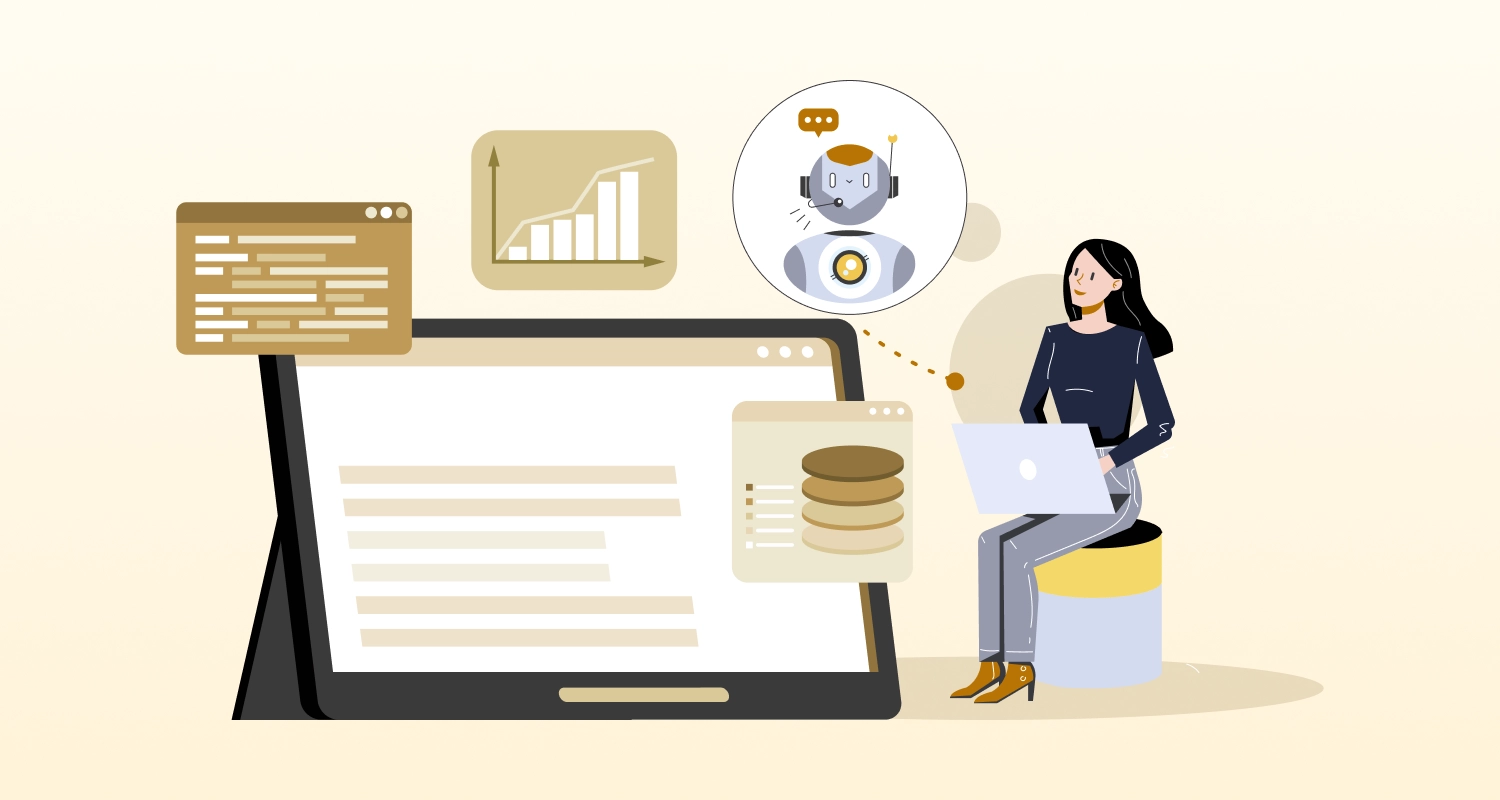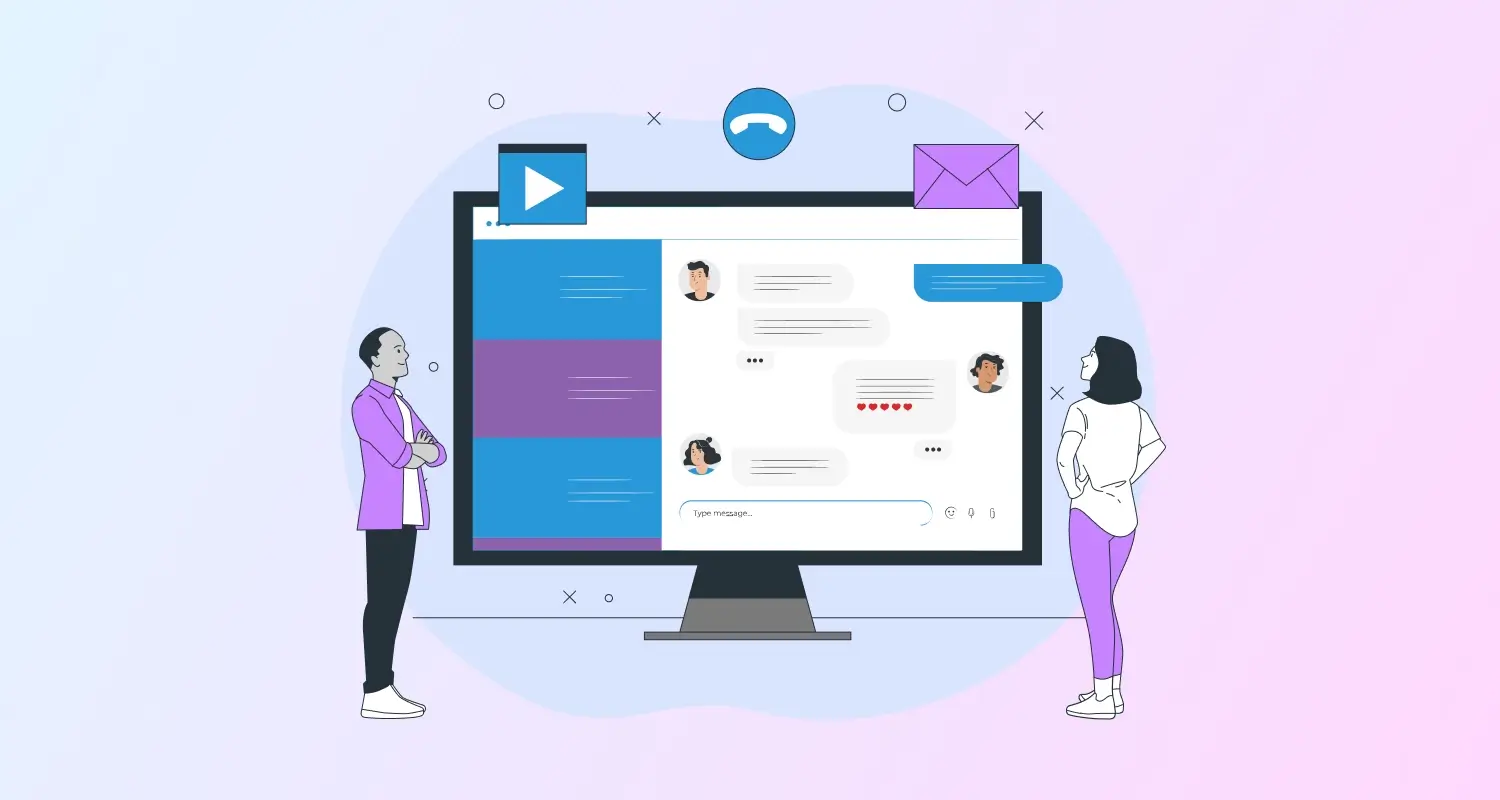Compelling operations constantly adjust to change by utilizing cutting-edge technologies and building successful operations. In particular, enterprise software development has become increasingly popular in the last several months. Businesses are driven to outperform their competitors and rely heavily on enterprise software development.
These technologies offer enhanced consistency, better data processing, strong security features, and deployment process automation. Using these cutting-edge and new technologies might boost your company with enterprise software development services. Let’s understand the trends in enterprise software that one should be aware of.
10 Enterprise Software Industry Trends

As you are aware, the enterprise software market is changing quickly owing to technological improvements, thus company owners need to be aware of the newest trends in enterprise software. Examining the differences between corporate application development before and following the COVID-19 pandemic will help you understand the need to keep up to date with emerging trends. Businesses were progressively moving to cloud computing and cloud-based solutions before the pandemic to improve scalability, flexibility, and cost-efficiency.
However, as more and more companies look for flexible remote work arrangements, collaborative software solutions, and effective operations, you may observe an acceleration of the growth of corporate solutions. As a result, cutting-edge technology including project management software, video conferencing software, and virtual collaboration tools gained prominence.
Let’s examine the newest developments in technology, including what makes enterprise apps for big firms and which technologies may be useful to them. These enterprise technological trends also support digital transformation.
We’ve compiled a selection of the newest products and services in this blog, carefully chosen to align with the preferences and adoption patterns of businesses across all industries. These technological advancements are what set businesses apart and help them turn their ideas into reality.
1. Low-Code/No-Code Development for EAS
A full third of respondents 35.05% to the State of Software Development reports said they had no plans to learn a new programming language in the upcoming year.
Businesses are starting to use low-code or no-code development because it makes it possible for non-technical users to create customized applications with little to no coding experience. Therefore, companies should be careful to provide users with minimum or no-code development features when they construct or improve enterprise systems. This facilitates users’ or customers’ creation of customized processes and services depending on their particular needs.
Business owners or subject-matter experts can quickly experiment with new ideas and improvements without having to commit the time and energy of an experienced developer thanks to the low code or no code development strategy. Companies can give users the ability to alter the program and user interface, which leads to more customization options. Companies can also cut expenses by utilizing low-code or no-code app development.
2. Integration of Machine Learning (ML) and Artificial Intelligence (AI)
Artificial Intelligence (AI) and Machine Learning (ML) are transforming company operations through the automation of intricate procedures, the extraction of important information from vast databases, and enhanced decision-making skills. By utilizing AI and ML’s capabilities, you can make it easier to construct data-driven applications and create engaging user experiences. With machine learning, algorithms will continuously pick up new skills, adjust to changing conditions, and improvise over time in response to user data and information.
Enterprise software that incorporates AI and machine learning models allows for the forecasting of market trends, intelligent chatbots for real-time communication, and AI-based suggestions for a customized user experience. Integration of AI and ML will enable process optimization, work automation, and increased innovation.
Lately, Open AI-a leader in AI research-has taken the world by storm with its incredible powers and ground-breaking goods. Many businesses and SaaS providers are taking advantage of the potential to use OpenAI for SaaS to improve the effectiveness, efficiency, and capacity of their enterprise and SaaS offerings.
3. Native and Progressive Applications
The current enterprise software market trends are dominated by native apps. Because it enables companies to target both current and potential smartphone users, it is being considered. When compared to the Android and iOS platforms, it significantly improves client experience and brand performance.
The most recent development in this category of applications is the Progressive Web App. Often referred to as PWAs, the designs improve and target CX. The advantages of PWAs, which include quicker loading times, more functionality, lower bounce rates, the ability to operate on devices as standalone windows, and a higher likelihood of browser versions without restrictions for apps, would be described by any reputable mobile app development business.
4. Making Use of AR and VR Solutions
Platforms for virtual reality (VR) and augmented reality (AR) are becoming more popular as more companies combine them with enterprise software. Industries such as Manufacturing, Healthcare, and Retail are utilizing AR software solutions and VR software solutions to offer effective training, hands-on sessions, and immersive experiences. As every sector strives to transform itself through the adoption of cutting-edge technologies, augmented reality (AR) technology can help you expand your company’s reach beyond computer displays and customized alerts.
Companies may use AR/VR platforms to model real-world circumstances, develop virtual training environments, and facilitate immersive and engaging teamwork. By utilizing the potential of enterprise software trends such as Augmented Reality and Virtual Reality, companies can provide users with engaging features and experiences.
5. Robotic Process Automation (RPA) and Automation
When it comes to updating enterprise applications, one of the most important topics you should be aware of is robotic process automation or RPA. Rule-based and repetitive processes can be automated with RPA tools by simulating human interactions with software. It has been demonstrated that using robotic process automation can increase operational efficiency in businesses. Employees will save time overall as a result of reduced human error risk brought about by automated operations.
It will be beneficial to use RPA for data entry, invoice processing, report creation, workflow automation, and data extraction. Furthermore, as more and more companies want to streamline labor-intensive business processes, the number of RPA use cases and adoption will increase in the years to come.
6. Cloud Enterprise Software Apps
Cloud-based technologies rank among the most crucial technologies that should be discussed. Conventional on-premise applications have reached their limit at this point. A strong substitute implementation platform for enterprise software development services is now available: cloud infrastructure. Cloud-based enterprise computing has gained a lot of traction since businesses require timely and meaningful insights to improve their performance. When combined, cloud infrastructure and enterprise app development significantly reduce the difficulties associated with developing corporate applications.
The fact that cloud infrastructure is growing exponentially is only further evidence of how much organizations depend on the cloud. Because of cloud computing’s scalability and agility, firms may easily manage enterprise software even while they’re far away. It has already been forecast that global expenditure will rise and continue to do so. Putting money into these kinds of cutting-edge technologies will always pay off and lead to better results.
IaaS, PaaS, cloud storage for databases, and other crucial components that make cloud computing compatible with online and mobile apps are a few examples of integrated enterprise applications.
7. Periodic Integration and Implementation
Effectively fixing glitches or bugs and permitting experiment-driven, lax software development processes continue to be challenged.
Agile delivery is confirmed by code testing. Quick delivery and pertinent code testing are essential since they let the development team refine its functionality and provide goods and services quickly during a continuous cycle.
The delivery feature cycle is greatly reduced by this cascading effect in continuous delivery via testing and continuous deployment via automated app updates.

8. Big Data
Big Data, sometimes referred to as the Great Power or Responsibility, or the “elephant in the room,” will have greater sway. Data faces significant challenges whenever it emerges as an organization’s most potent instrument. The focus of the issue is on properly tapping and utilizing data to gain an advantage in a variety of economic operations.
Data-as-a-Service (DaaS) is one of the new initiatives that Big Data has planned for 2025. DaaS verifies that enterprises have access to precise data at the appropriate moment to avoid data redundancy.
However, customers have become more informed in recent years, and their experiences with data security and usage are well-documented. Therefore, the issue of data security comes up for brands that need help to uphold their trust.
9. User-Friendly Experience and Design
Any enterprise software’s overall success can indeed be impacted by meeting the demands and preferences of users and consumers. Enterprise solution interfaces and designs that are focused on the needs of users have become critical components for companies looking to match software to user expectations.
Furthermore, creating user-friendly and straightforward interfaces will promote smooth interactions and ease of use, increasing customer happiness and retention. By concentrating on what your users truly desire from an enterprise program, you may enhance their experience and progressively guide your company toward prosperity.
10. Integration of Business Intelligence and Data Analytics
Businesses can benefit from utilizing enterprise business intelligence software such as Power BI and data analytics to make well-informed, success-driven decisions. By leveraging enterprise software’s business intelligence and data analytics features, you may extract meaningful insights from huge datasets and spot useful patterns, trends, and correlations that can aid in the development of corporate strategies and plans. In reality, by utilizing data analytics, you may create an organization that is driven by data.
Data analytics and business intelligence integration enable businesses to gain a deeper insight into user interest, market trends, consumer behavior, and performance measures. This trend, among others, can help your enterprise application remain competitive.
Conclusion
In summary, the major developments in enterprise software that we have discussed above will have a significant impact on how the industry develops in the future. Businesses can modernize, develop, and grow with great potential from these trends in enterprise software. Businesses have a plethora of options for improving enterprise software efficiency and overall growth, ranging from integrating AI and ML to better decision-making to using cloud-based ERP solutions to increase scalability and flexibility. Organizations may excel in customer service and set the path for success in this digital age by adopting these changing trends.
At CMARIX, we provide enterprise software development services that take into account both the future of enterprise software and the most recent developments. Take your current enterprise solutions to the next level by collaborating with us.
Frequently Asked Questions
How Do Enterprise Software Trends Impact Different Industries?
It’s possible to create and implement apps more quickly and easily by modernizing enterprise solutions by keeping up with the most recent developments in enterprise software. Additionally, businesses will leverage APIs’ strength to incorporate various tools and technologies with the software, facilitating smooth data interchange and teamwork.
What Does the Future Hold for Enterprise Software?
The technology architecture of the future will be mostly standardized among clients, permitting minimum customizations, as cloud computing becomes the preferred option for enterprise applications. Nonetheless, the primary characteristic that sets implementations apart will be their highly customized, contextualized micro-capabilities.
How Can Businesses Adapt to Emerging Enterprise Software Trends?
By updating their enterprise solutions, businesses may take advantage of new technology, improve operational effectiveness, and maintain their competitiveness in the dynamic market. Businesses that enhance their company software can gain the following advantages: Enhanced productivity and efficiency by optimizing workflows.
How Can Businesses Ensure a Smooth Transition When Adopting New Enterprise Software Trends?
To facilitate a seamless adoption of digital transformation technologies, it is imperative to foster a change management culture (OCM). OCM is all about preparing staff members for impending changes, listening to their worries, and giving them the tools they need to confidently adopt new technology.







